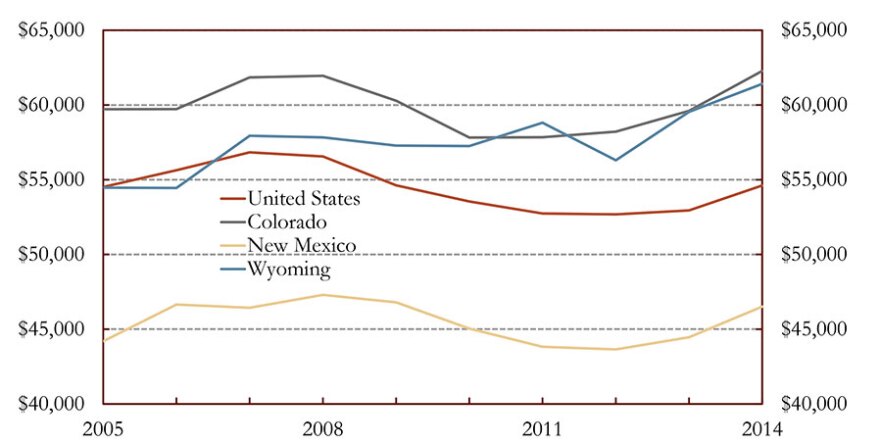Housing affordability comes down to more than just prices. Affordability is a mix of household income, home prices, and interest rates.
While in Colorado home prices have gotten a lot of attention lately, a released from the Federal Reserve Bank of Kansas City, finds homes in Colorado are more affordable than they were prior to the recession.
The study, by Alison Felix, the Vice President and Denver Branch Executive at the bank, compares home prices, income, and affordability in Colorado, New Mexico, Wyoming and nationally. Home prices in Colorado are at the head of the pack and have shown since 2011; the median single-family home price in Colorado is now above $260,000, whereas the national median is closer to $180,000.

One might think such steep increases are bad news for prospective homebuyers in the state and would make houses less affordable. It's important, though, not to forget the additional factors in the mix: income and interest rates.
First, incomes. Household incomes peaked in 2008 in the United States and in Colorado. Yet incomes in Colorado are on the upturn, and are nearing, if not quite surpassing, their 2008 peak of around $63,000.
Then there's the issue of interest rates. The historical average for interest rates is 18 percent. In 2014, "the effective interest rate was 4.3 percent," says the report. That has a huge impact on affordability, making the monthly payment for a pricey home a lot lower than it is when interest rates are in the double digits.

Because incomes in the state seem to be recovering and interest rates remain low, the Kansas City Fed analysis calculates that houses are actually more affordable now in Colorado than anytime between 2005 and 2010. Looking at the past decade, 2006 was actually the trough of housing affordability in the state.

This doesn't mean Colorado should pat itself on the back; as the report shows, it's still more unaffordable to buy a home here than it is nationally or in nearby states. High rents are also a , and rising home prices also make it harder for first-time home buyers to enter the market, said Felix.
"Certainly as home prices have increased in recent years, saving up for that down payment is increasingly difficult."
Add to that students who have increasing debt loads, and it means many potential buyers feel priced out of today's market. Additionally, a lack of affordable inventory has affected middle-income buyers in nearly all of the state's Front Range cities. As Felix and her co-author note, the big picture of rising incomes doesn't mean everyone's income is rising.
"These variations in income growth would cause housing affordability to move differently for some income classes."
Also, just because the housing affordability index is better now than it was pre-recession does not mean it will stay that way. The affordability trend is going downward, meaning houses are becoming more unaffordable in the state. Interest rates are likely to go up, and home prices are likely to continue to increase. Even if income continues to grow, the slow rate of increase won't keep up with those other factors.
"I expect to see a decline in affordability over the next several years," said Felix.






